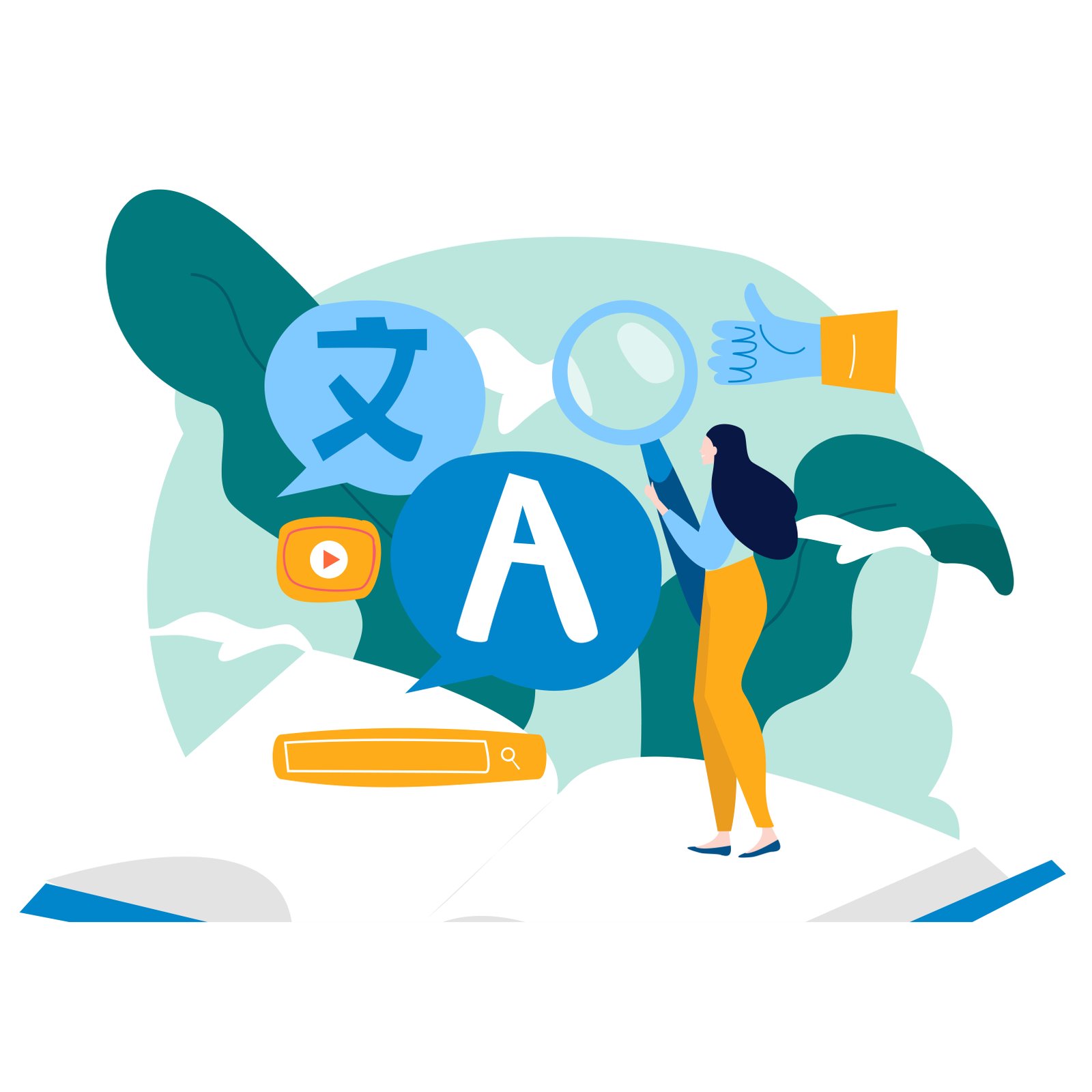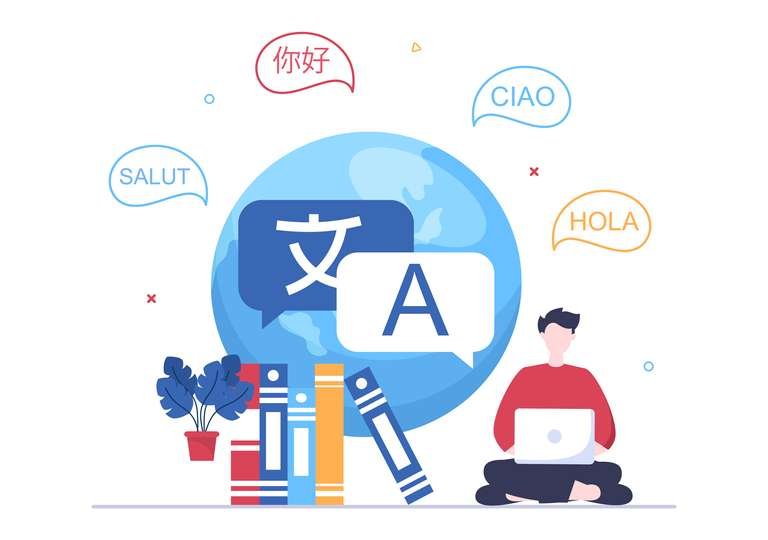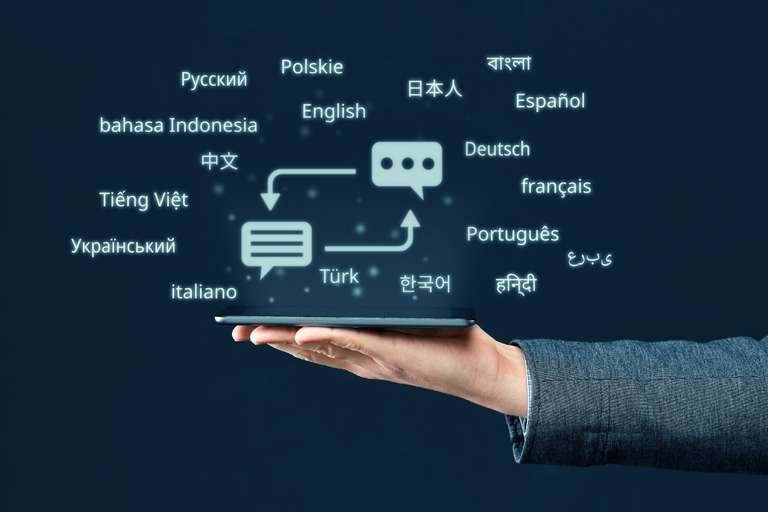How AI Translators are Bridging Language Gaps

Amazon, the world’s eCommerce juggernaut, has redefined the way we shop. With its virtual shelves stretching across continents, Amazon’s success is deeply intertwined with its ability to speak the language of its customers. When a customer in Tokyo searches for the latest gadgets or a shopper in Paris explores fashion trends, they do so effortlessly in Japanese and French, respectively.
But how is this possible?
Through sophisticated translation algorithms and a commitment to understanding the nuances of language, Amazon tailors its product listings, customer support, and marketing materials to resonate with the hearts and minds of its diverse customer base. By breaking language barriers, Amazon doesn’t merely sell products; it sells a global experience.
Amazon’s success story isn’t just about selling; it’s about understanding, connecting, and embracing the world, one language at a time.
In today’s digital age, language is the ultimate frontier, an indispensable cornerstone upon which businesses, regardless of their sector, build their international presence and influence. Traditionally, companies have relied on translation services to breach these linguistic barriers, enabling cross-cultural communication. However, the rise of AI translation is elevating this process to new heights. With AI translation, businesses can strengthen their international presence, reaching new markets and establishing meaningful relationships while ensuring their messages are accurately conveyed and culturally nuanced. One of the most common examples of an AI translation tool is Google translate.
Table of Contents
In this blog, we will navigate the impact and benefits of AI translation, how AI translators work, and more. Let’s get started.
What is AI translation, and How Does it Work?

In essence, AI translation is the process of translating text or speech from one language to another using deep learning algorithms and computational methods. AI translators are designed to provide accurate and natural-sounding translations quickly and efficiently and can be utilized across industries, including business, legal, medical, academic, and more.
Unlike traditional translation methods that rely solely on human translators, these systems are trained on vast amounts of multilingual data, allowing them to analyze patterns, grammar rules, and contextual cues to produce correct and precise translations. Let’s deeply understand how automatic translation works.
Step 1: Data Collection and Training
Large datasets containing parallel texts in the source and target languages are collected, cleaned, and formatted by removing any inconsistencies, errors, or irrelevant information. These include pairs of sentences in different languages with their corresponding translations. For example, a sentence in English would be paired with its translation in French.
The text is then broken down into smaller units like words or subwords to help the neural network process the data effectively. Neural networks, particularly recurrent neural networks (RNNs) or more advanced models such as neural machine translation are trained with this data.
Step 2: Neural Networks and Language Patterns
Languages follow specific patterns, grammatical rules, and syntax. AI translation models, through training on large datasets, learn these patterns. For instance, they learn word order, verb conjugations, noun-adjective agreements, and other linguistic rules specific to each language.
Once the model has been trained and validated, it can be used for translation. During inference, input text in one language is passed through the encoder, and the decoder generates the corresponding translation in the target language.
When given a new input text in a source language, the trained AI translation model decodes the input and generates the translated output in the target language. This process involves predicting the most probable sequence of words in the target language based on the learned patterns from the training data.
Step 3: Post Processing
AI translation outputs may require post-processing to improve readability and naturalness. This can involve fixing grammar issues, adapting translations to cultural nuances, and ensuring that the output reads fluently. In some cases, especially for professional translations, human translators may perform post-editing to refine the machine-generated translations, ensuring accuracy and fluency.
To sum it up, the effectiveness of an AI translation system largely depends on the quality and quantity of training data, the architecture of the neural network, and the quality of post-processing and fine-tuning.
Significance of AI Translation Tools
The transformative capabilities of AI translators offer a plethora of advantages for businesses, from enhancing efficiency to reducing costs to enabling global business expansion and more.
Efficiency
Have large volumes of data to translate? No problem; with AI translation, it only takes minutes. This speed is particularly useful for handling time-sensitive tasks, such as real-time language translation during international conferences or live events.
Cost-Effectiveness
Did you know a professional translator charges anywhere from $0.10 to $0.30 per word, depending on the language pair being translated, the quality of the translation, the turnaround time, and other factors? AI translators, on the other hand, are a one-time investment. Plus, they can handle vast volumes of content rapidly without significantly increasing costs. AI systems are particularly advantageous for businesses with extensive documentation, customer support, or content localization.
Consistency
Since AI translators follow a set of rules and algorithms, they can provide consistent high quality translations, minimizing the risk of inconsistencies, regardless of the length or complexity of the content.
Human translators, on the other hand, possess a deep understanding of language and culture, which can introduce slight variations in translations.
Multilingual
Unlike human translators, AI translation tools can process numerous languages simultaneously and in real time, ensuring efficient and consistent translations across diverse linguistic contexts. This is highly beneficial for companies looking for global business expansion. AI translators can localize their products, services, and marketing materials for different linguistic markets, reaching a broader customer base without hiring multiple professional translators for different languages.
Ease of Use
AI translators eliminate the need for time-consuming negotiations, scheduling, and potential delays associated with human translators. You simply have to choose the AI translation software, input the text, or upload the document to be translated, and bingo! In minutes, you’ll have the translated content.
More recently, numerous text to speech software have jumped on the AI translation bandwagon, offering a feature that makes it easy to automatically translate text, voiceover, or recording into multiple regional and global languages.
Benefits of Using AI Translators
Incorporating AI translators into business operations enhances communication and facilitates a deeper understanding of diverse markets, leading to improved customer relationships and sustainable global expansion. Let’s look at some of the benefits:
Global Reach
If you are a business looking to expand into the global market, one of the easiest ways to do so is to translate your products, services, web pages, and marketing content into multiple languages. By providing accurate translations, AI translators enable companies to connect with potential customers in different regions, expanding their market reach and driving international growth. This expanded reach fosters a broader customer base, leading to increased sales and brand recognition on a global scale.
Time Savings
Did you know that a human translator, on average, can output approximately 2500 words a day? AI translators, on the other hand, streamline this process by providing rapid, automated translations, saving businesses valuable time and resources. What once took days or weeks can now be accomplished within hours, accelerating project timelines and boosting productivity across various business functions.
Scaling Localization
Manually localizing marketing materials, websites, descriptions, product listings, and customer support content to resonate with local customs, languages, and preferences can be daunting and time-consuming.
This level of customization enhances user experience, making customers feel more connected to the brand. Localization also builds trust by demonstrating that a business understands and respects the unique nuances of different markets, leading to higher customer engagement and loyalty. AI translators can swiftly translate vast amounts of content into various languages while preserving context and meaning and ensuring accurate translations that resonate with specific cultures.
Versatility of AI Translators: Applications and Usecases
From written content such as articles, emails, websites, legal documents, and product descriptions to spoken conversations, including interviews and podcasts, these powerful tools can handle an array of content types.
Documents
From legal contracts, reports, manuals, and other textual documents, AI translators can translate numerous documents. Legal agreements, for example, require precise and accurate translation to ensure that the intended meaning and legal implications are preserved. AI translators, especially those trained in legal terminologies and language patterns, can recognize legal jargon, context, and specific clauses, ensuring the translated contract retains its legal validity and meaning.
Websites
When users can access a website in their preferred language, it creates a seamless and positive user experience and increases the chances of conversion and customer retention. It also instills trust and credibility in the brand. Furthermore, translating a website with AI allows businesses to enter new markets and expand their reach without significant investments in human translation services. It enables rapid scalability, allowing companies to target multiple countries and regions simultaneously, opening doors to new customers and revenue streams.
Entertainment Content
AI translators can be used to accurately generate subtitles and captions and translate movie dialogues into various languages, making it easier for international audiences to relate to and understand a movie. This also improves accessibility for the hearing impaired, ensuring inclusivity.
Additionally, AI-powered dubbing can seamlessly synchronize translated audio with the actors lip movements, creating a natural viewing experience.
Murf: Navigating the Intricacies of Diverse Languages with Unmatched Precision
Building on its renowned text to speech and voice cloning services, Murf recently introduced a new AI translation feature Murf AI Translate to enable businesses with seamless, accurate, and rapid translation capabilities. With Murf’s translation technology, language is no longer a barrier but a bridge, connecting diverse cultures and global audiences effortlessly. Whether you’re expanding your business internationally, enhancing cross-cultural communication, or simply exploring the world of languages, Murf’s translation ensures precision and fluency. That said, Murf AI translate is specifically designed for businesses and requires an enterprise subscription to access.
Murf’s text and speech translation is available in 20+ languages, including Spanish, Italian, French, English, Japanese, and more. Businesses can convert their scripts and voiceovers into multiple languages in minutes, simplifying localization and globalization processes. What makes Murf’s AI translator unparalleled is that the translations are not only linguistically accurate but also contextually meaningful. Murf doesn’t just translate words individually; it comprehensively understands the context of the entire sentence or paragraph.
Another standout aspect of Murf AI translate is that the translation process isn’t just restricted to converting text from one language to another. Users can also choose the appropriate tone in which they want the translated script, be it formal, academic, casual, and more, taking more control of the translation quality.
Here is a quick demo of using Murf’s translation feature:
https://demo.arcade.software/EKTkwTdHMyZiXEqSCcqU?embed
So, if you are looking for effortless global communication, Murf AI Translate is your gateway.
Break down language barriers and connect with the world in a simple, accurate, and efficient way. Embrace Murf Translate’s power and redefine how you speak, share, and connect!

FAQs
What is AI translation?
AI translation is the process of translating text or speech from one language to another using deep learning algorithms and computational methods.
Can AI ensure consistent translation across various content?
Yes, AI translators follow a set of rules and algorithms that help provide consistent translations, minimizing the risk of inconsistencies across various content.
What types of content can be translated using AI?
AI translators can handle various content types, from written content such as articles, emails, websites, legal documents, and product descriptions to spoken conversations, including interviews and podcasts.
How can businesses benefit from AI translation?
From enhancing efficiency to reducing costs to enabling global business expansion, AI translation can benefit businesses in multiple ways.



